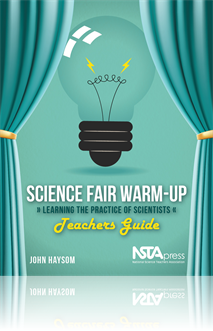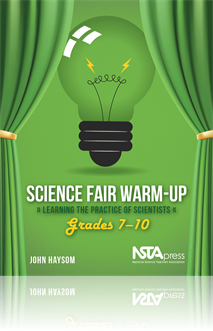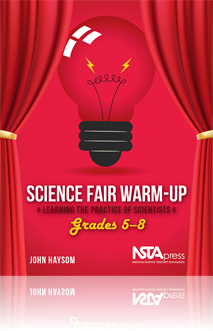All Book Chapters
Book Chapter
Students often assume that tests are fair and their experiments are well controlled. This chapter introduces students to the idea of repeatability—the test of a fair test. Repeatability is an important cornerstone of scientific exploration. The cha...
Book Chapter
This chapter is about being accurate and being sure. It is about errors—recognizing them, taking account of them, and eliminating them. The chapter is designed to help students become aware of and respond to errors of measurement and errors that ar...
Book Chapter
This chapter is about graphing data. The three lessons are designed to develop the students' awareness of the value and techniques of graphing by providing an overview of graphing rather than a comprehensive course in graphing skills....
Book Chapter
The Numbers Game: Are Some Measures Better Than Others?
In this chapter, readers see how Marie and Monique want to make the strongest magnet possible and had various ideas for how to do so. They wonder whether the number of times you stroked the tube made a difference. They wonder whether the size of the ...
Book Chapter
As you work on a project, students will meet all sorts of problems: problems with measuring, designing apparatus, devising good investigations, graphing, making sense of what you have discovered. Students can get help with these problems from friends...
Book Chapter
This chapter focuses on the products of scientific inquiry. It relates the product of inquiry to the process of inquiry and presents scientific activity as a human endeavor motivated by the desire to produce valuable products. It portrays scientific ...
Book Chapter
This chapter is about sharing and communicating scientific findings. It is designed to help students who have done a project to display it, write it up, and talk about it. It attempts to put this exercise in the context of how the community of scient...
Book Chapter
The first lesson in this chapter focuses on judging displays, the second on judging written reports, and the third on judging oral presentations. The lessons may also be considered a review of what students have learned. To help them make judgments, ...
Book Chapter
This chapter is designed to help students generate ideas for an investigation of their own and serves as a launching pad for science fair and science project work. Although this is the last chapter, some teachers may choose to use it first. The three...
Book Chapter
An Overview of the Nature of Scientific Inquiry: Beginner Scientists and Experienced Scientists
This chapter presents a project on puddles and understanding more about evaporation and the way nature behaves. Over the years, scientists have learned a lot and have made important contributions on how the rate of evaporation is affected by the size...
Book Chapter
Science Without Numbers: Wondering Why
The chapter suggests making a paper helicopter and find out as much as you can about it in 30 minutes. Record the findings and then begin working in the same way on a project of your choice. You’ll find that one experiment leads to another as you ...
Book Chapter
The Numbers Game: Learning to Play the Numbers Game
This chapter focuses on how our senses can deceive us by investigating the question, “Which line is longer?” Everyone was deceived! Scientists invent new instruments and are often very creative. For example, one way to measure the brightness of a...
Book Chapter
Variables and Their Controls: Being Fair
To create a fair test, all the conditions (variables) must be kept the same (constant) except for the variable being investigated. Scientists call this type of investigation a controlled investigation. They try to find out what variables make a diffe...
Book Chapter
Experiment Design: Getting Experiments to Work: Repeatability
This chapter features five investigations from Starting Points presented in Chapter 1 and gives a scenario of “the test of a fair test” for each. If a test is a fair test, it is expected to be repeatable. This is important and scientists often ch...
Book Chapter
Sources of Error: Taking the Average
This chapter focuses on sources of error and taking the average. If an investigation is done five times with different readings each time, what could make the difference and which result is most accurate? The average will give the “best” answer,...




